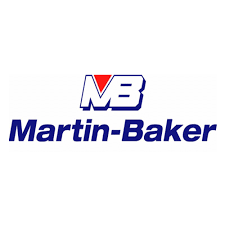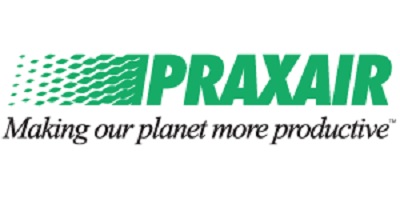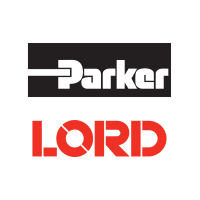
Aircraft Engine Manufacturers
There are several leading aircraft engine manufacturers today, each with unique strengths and areas of specialization. These companies combine decades of experience, cutting-edge technology, and relentless innovation to power the aircraft that connect our world.
In this article, we’ll take a deep dive into the top aircraft engine manufacturers, their most significant contributions to the industry, and the engines that have become synonymous with their names.
GE Aviation
GE Aviation is a multinational conglomerate with a significant presence in the aircraft engine manufacturing sector. Established in 1917, GE Aviation has grown to become one of the world’s leading providers of jet and turboprop engines for commercial, military, and general aviation aircraft.
Some of GE Aviation’s most notable engines include the GE90 engine family, which powers the Boeing 777 series, and the GEnx, which is used on the Boeing 787 Dreamliner and the Boeing 747-8. The GE9X, the latest addition to their portfolio, is designed specifically for the Boeing 777X and has set a Guinness World Record for the most powerful commercial aircraft jet engine, producing 134,300 pounds of thrust.
Rolls-Royce
Rolls-Royce, a British company with a prestigious history dating back to 1904, is a significant player in the aircraft engine manufacturing sector. They specialize in designing and producing engines for commercial and military aircraft and marine and energy applications.
The Rolls-Royce Trent series of engines is among their most successful products. The Trent 700 powers the Airbus A330, the Trent 900 is used on the Airbus A380, and the Trent XWB is specifically designed for the Airbus A350 XWB. Rolls-Royce is also known for its BR700 series, which powers various business jets and regional aircraft.
Pratt & Whitney
Pratt & Whitney, a division of Raytheon Technologies Corporation, has been a dominant force in the aircraft engine manufacturing industry since its inception in 1925. With a strong focus on innovation, they’ve developed a range of engines for commercial, military, and general aviation applications.
The Pratt & Whitney PW1000G series, known as the PurePower Geared Turbofan (GTF) engines, has gained widespread recognition for its fuel efficiency and reduced environmental impact. The PW1000G powers the Airbus A220, the Embraer E-Jet E2, and the Mitsubishi SpaceJet. Pratt & Whitney is also responsible for the iconic F135 engine, which powers the F-35 Lightning II Joint Strike Fighter.
CFM International
CFM International is a joint venture between GE Aviation and Safran Aircraft Engines, a French company with a rich history in the aviation industry. Founded in 1974, CFM International has become one of the most successful aircraft engine manufacturers, particularly in the single-aisle commercial aircraft market.
Their flagship product, the CFM56 series, has powered various aircraft, such as the Boeing 737 and Airbus A320 families. The successor to the CFM56, the LEAP (Leading Edge Aviation Propulsion) engine has become the engine of choice for next-generation single-aisle aircraft, including the Boeing 737 MAX and Airbus A320neo families.
Safran Aircraft Engines
Safran Aircraft Engines, formerly known as Snecma, is a French aerospace company specializing in the design, production, and maintenance of aircraft engines. Apart from their partnership with GE Aviation in CFM International, Safran has independently developed engines for various military and space applications.
One of Safran’s most notable contributions to the industry is the M88 engine, which powers the Dassault Rafale, a twin-engine multirole fighter aircraft used by the French Air Force and Navy. Safran is also involved in the development of the Ariane rocket family, providing the Vulcain engine that powers the main stage of the Ariane 5 and the Vinci engine for the upcoming Ariane 6.
Honeywell Aerospace
Honeywell Aerospace is a division of Honeywell International Inc., an American multinational conglomerate with a diverse range of products and services. With roots dating back to the 1930s, Honeywell Aerospace has built a reputation for producing reliable engines, auxiliary power units (APUs), and avionics systems.
Honeywell’s TFE731 turbofan engine family is one of their most successful products, powering a wide range of business jets from manufacturers like Dassault, Bombardier, and Gulfstream. They also produce the TPE331 turboprop engine series, which is used on various regional and general aviation aircraft.
Williams International
Williams International, an American company founded in 1955, specializes in designing and manufacturing small gas turbine engines for the aviation industry. They are well-known for their expertise in producing engines for light business jets and other small aircraft.
The Williams FJ44 turbofan engine family has become popular for light business jets, powering aircraft like the Cessna CitationJet series, Pilatus PC-24, and Embraer Phenom 300. Williams International has also developed the FJ33 engine, which is used on the Cirrus Vision Jet, the world’s first single-engine personal jet.
International Aero Engines (IAE)
International Aero Engines (IAE) is a multinational joint venture comprising Pratt & Whitney, MTU Aero Engines, and Japanese Aero Engine Corporation (JAEC) and was established in 1983. IAE has made a significant impact on the aircraft engine manufacturing sector, particularly in the narrow-body commercial aircraft market.
IAE’s primary product, the V2500 engine, is a popular choice for the Airbus A320 family of aircraft. With more than 7,000 engines delivered, the V2500 has proven to be a reliable and fuel-efficient option for airlines worldwide.
Few other aircraft engine manufacturers are:
- Engine Alliance
- Aviadvigatel
- Ivchenko-Progress
- NPO Saturn
- PowerJet
- Klimov
- EuroJet
- Xi’an Aero-Engine Corporation (XAEC)
- Guizhou Aircraft Industry Corporation (GAIC)
- IHI Corporation
- Gas Turbine Research Establishment (GTRE)
FAQs
How do aircraft engine manufacturers ensure the quality and safety of their products?
Aircraft engine manufacturers ensure quality and safety through rigorous design, testing, and certification processes. This includes computer simulations, wind tunnel testing, component-level testing, and full-scale engine testing. Manufacturers must meet strict regulations and guidelines set by aviation authorities such as the Federal Aviation Administration (FAA) in the United States and the European Union Aviation Safety Agency (EASA).
What is the process for an aircraft engine manufacturer to certify a new engine?
To certify a new engine, manufacturers must undergo a multi-step process involving design, testing, and documentation. This process includes meeting specific certification requirements set by aviation authorities, such as the FAA and EASA. Here’s an example of aircraft engine certification process in the US:
- FAA oversees certification
- Process begins with application submission
- Manufacturer outlines engine design, specs, and compliance
- Compliance with 14 CFR Part 33 regulations required
- Engine undergoes thorough testing: ground, flight, endurance, etc.
- Test results evaluated for safety, performance, and reliability
- FAA reviews documentation and verifies compliance
- Compliance findings and approvals documented
- A Type Certificate (TC) is issued if all requirements met
- Production Certificate (PC) needed for mass production
- Continuous operational safety monitoring after certification
How do aircraft engine manufacturers collaborate with airframe manufacturers during the design process?
Aircraft engine manufacturers work closely with airframe manufacturers from the early stages of aircraft design. This collaboration ensures that the engine integrates seamlessly with the airframe, optimizing performance, efficiency, and safety. The process includes sharing design specifications, conducting joint tests, and addressing any compatibility issues between the engine and airframe.
What is the role of aircraft engine manufacturers in the maintenance and repair of their engines?
Aircraft engine manufacturers play a crucial role in providing maintenance and repair support for their engines. They offer maintenance, repair, and overhaul (MRO) services, technical support, and spare parts. Engine manufacturers often collaborate with airlines and MRO providers to ensure the timely and effective maintenance of engines, maximizing their service life and reliability.
How do aircraft engine manufacturers invest in research and development for new technologies?
Aircraft engine manufacturers invest heavily in R&D to develop new technologies, enhance existing engines, and improve fuel efficiency and environmental performance. They focus on areas such as materials science, aerodynamics, combustion, and noise reduction. Collaborative research initiatives, partnerships with universities, and government-funded programs also contribute to the advancement of engine technologies.
What are the environmental regulations and guidelines that aircraft engine manufacturers must adhere to?
Aircraft engine manufacturers must comply with environmental regulations and guidelines set by international organizations like the International Civil Aviation Organization (ICAO). These regulations focus on reducing emissions, fuel consumption, and noise pollution. Examples include the ICAO’s Carbon Offsetting and Reduction Scheme for International Aviation (CORSIA) and the Committee on Aviation Environmental Protection’s (CAEP) engine emission standards.
What are the main differences between the various types of engines produced by aircraft engine manufacturers?
The primary differences between aircraft engines include their design, size, and intended application. Major engine types are turbojet, turbofan, turboprop, and piston engines. Turbojet and turbofan engines are common for commercial and military aircraft, while turboprop and piston engines are typically used in regional aircraft or smaller, general aviation aircraft. Each engine type has unique characteristics regarding efficiency, performance, and complexity.
How do aircraft engine manufacturers manage their supply chain and collaborate with suppliers?
Aircraft engine manufacturers maintain a global supply chain, involving suppliers for various components, raw materials, and services. They establish long-term relationships with suppliers, conduct audits, and implement strict quality control measures. Manufacturers collaborate closely with suppliers to ensure component compatibility, timely delivery, and adherence to industry standards and regulations.
What are the major opportunities and challenges for aircraft engine manufacturers in the coming years?
Some of the major opportunities for aircraft engine manufacturers are as follows:
- Growing emerging market demand: Growth in commercial aviation, particularly in emerging markets, is driving demand for new aircraft and engines, while military and private aviation sectors also contribute to the market dynamics.
- Advancements in technology: The adoption of new materials, additive manufacturing, and digitalization in engine design and production offers opportunities for improving efficiency, performance, and reducing maintenance costs.
- New market segments: Expanding into new markets and segments, such as urban air mobility, electric propulsion, hybrid-electric systems, and hydrogen fuel cells.
A few of the key challenges that aircraft engine manufacturers will face in the future are:
- Supply chain disruptions: Global events, such as pandemics or geopolitical tensions, can disrupt the supply chain, challenging manufacturers to adapt and maintain production schedules.
- Environmental regulations: Stricter emission standards and noise regulations require continuous innovation and investment in new technologies and materials. Fulfilling environmental requirements while meeting increasing fuel efficiency and performance demands may be difficult to navigate.
- Alternative propulsion systems: The development of electric and hybrid propulsion systems presents both challenges and opportunities for traditional engine manufacturers as they adapt to new technologies and market demands.
- Competition: Manufacturers face competition from established rivals and new market entrants, pushing them to innovate, reduce costs, and improve customer support to maintain market share.
Conclusion
Thus, the aircraft engine manufacturing industry is shaped by a handful of prominent companies continually innovating and competing to deliver the most efficient and reliable engines possible. From single-aisle commercial aircraft to cutting-edge military jets, these manufacturers play a crucial role in powering the aviation industry and ensuring its continued growth and success.
Also Read







